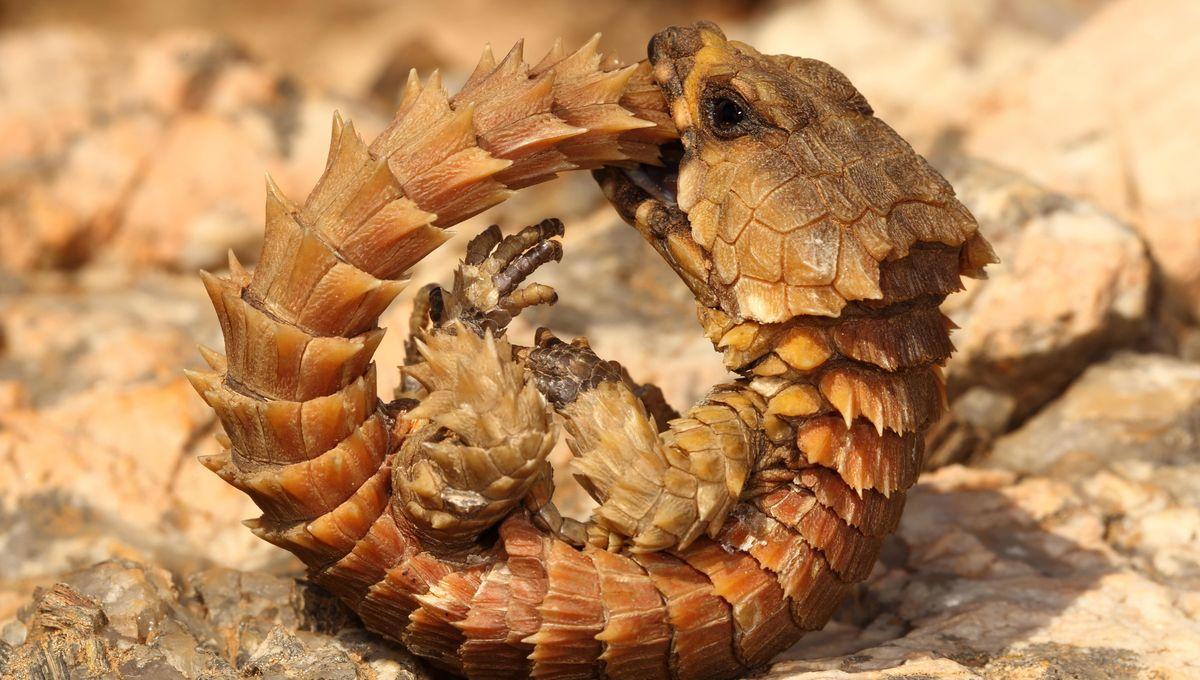Predator defence can be a pretty big part of an animal's life in the wild, whether you play dead, try and blend in with your environment, or in the case of the armadillo girdled lizard (Ouroborus cataphractus), bite your own tail to survive.
The rest of this article is behind a paywall. Please sign in or subscribe to access the full content. The armadillo girdled lizards live in an area known as the Succulent Karoo in South Africa and can live with as many as 60 of their family members in sandstone rocky crevices. These spiny creatures eat a diet of insects, especially termites, and scorpions; however if they are surprised by a predator they roll up into a circle putting their tails into their mouths. The ring this creates helps to protect the more vulnerable area of the stomach, while the tough outer scales protect the rest of the ring. ⓘ IFLScience is not responsible for content shared from external sites. Currently the armadillo girdled lizard is listed as Near Threatened by the IUCN Red List; they explain that the biggest threat to this species is the legal and illegal pet trade. Given that the animals live in such large family groups, entire small family populations can be wiped out relatively quickly. Ordinarily, these lizards are relatively long-lived with a maximum lifespan of around 25 years, though more often 13-15 years. The lizards are known as rupicolous, meaning they live among rocks. They are also diurnal, meaning they are active during the day. These lizards are relatively small, measuring only 12-16 centimeters (4.7-6.3 inches) from their snouts to the ends of their tails. Living in their large groups, they communicate by bobbing their heads, wagging their tails, and flicking their tongues. Mating occurs during September and October and the females are ovoviviparous, with the eggs hatching inside the mother who then has a live birth of one or two young. Sometimes the mother will feed the offspring, which is not typical for many lizard species.






